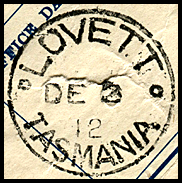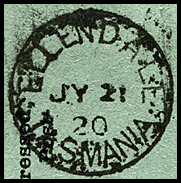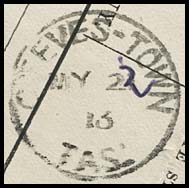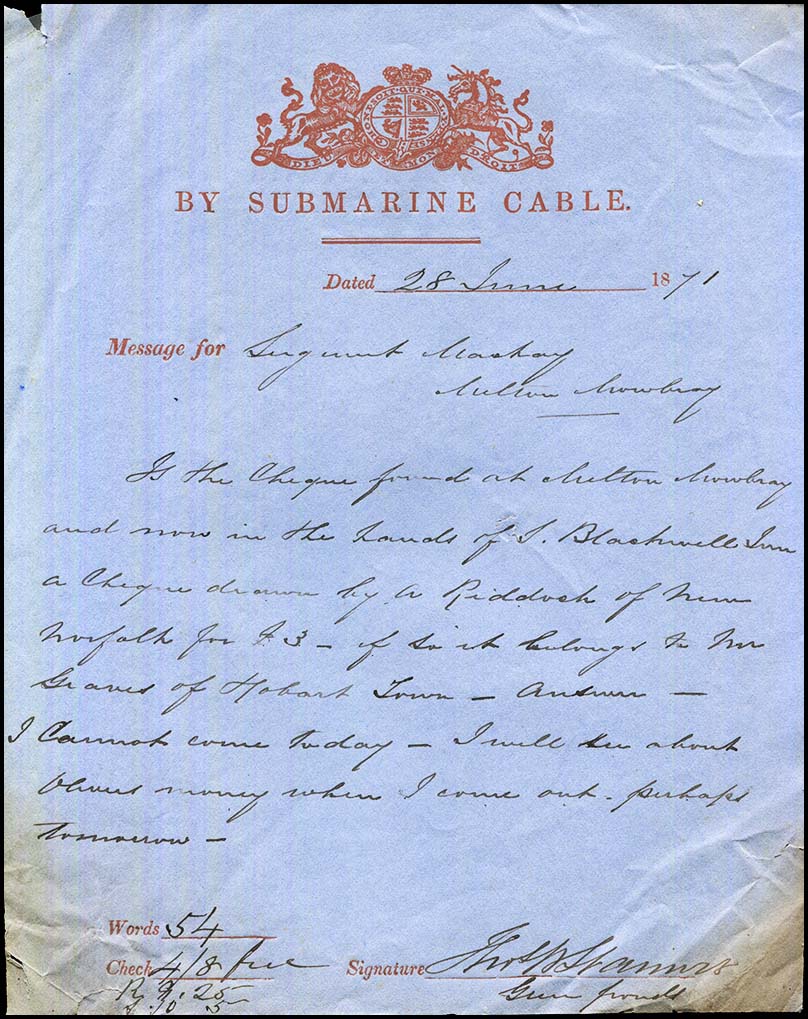Telegraph Offices in the south-west region.
- Australia 1901-1988
- New South Wales
- Queensland
- South Australia
- Tasmania
- Victoria
- Western Australia
- International
- Special aspects
|
A Telegraph Office was opened in Port Cygnet sometime between 1878 and 1884. The Post Office had opened in 1 January 1854. It changed name:
The latter change had "serious opposition from the Postal Department". |
Diameter: 24mm. Used on TI-DO-3B. |
| Ellendale. | ||
Has centered dots for separation. Used on AE-DO-1Ea. |
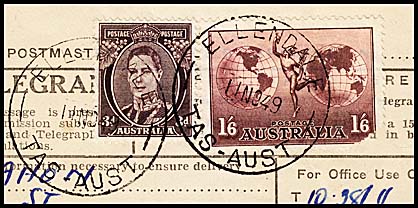 11 November 1949. Ellendale date stamp on telegram piece (probably from AW-TO-9Ba). Diameter: 31 mm. |
|
|
The |
||
Size: 24 mm. Used: 1904 to 1913. Rating: R. |
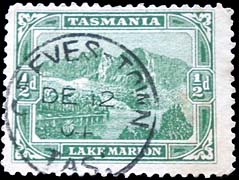 12 December 1904. |
Used on TI-TO-3. |
| Hamilton.
The Telegraph Office was opened in 1872. The Post office had opened in The earliest recorded telegram to Hamilton is 20 July 1875 from Bothwell. |
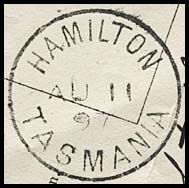 |
Hamilton. 11 August 1897. Diameter: 24 mm. Used on TC-DO-5A. |
|
In the Legislative Council of 11 July 1873, Mr. Young gave notice to ask the Colonial Treasurer whether it was the intention of the Government to establish an electric telegraph station at Macquarie Plains, district of Hamilton. On 16 July, the Colonial Treasurer replied by saying it was the intention of the Government to open a telegraph station at Macquarie Plains, Hamilton District and it was hoped that the necessary works would be sufficiently advanced to enable the station to be opened on the 1st August next. On 11 November 1873, the Mercury announced that a Telegraph Office had been opened at Macquarie Plains that day (probably meaning Monday 10 November). |
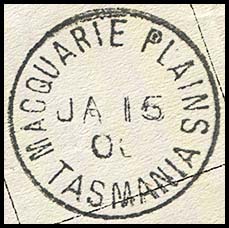 15 January 1900. Used on TC-DO-5A. |
|
Melton Mowbray is located in the Midlands region of Tasmania. Settlement began in the last 1840s when the town was called Cross Marsh. The place was apparently not gazetted until 1974(!). |
| The earliest evidence of the operation of the Melton Mowbray Telegraph Office is a telegram delivery form used to send a message from Green Ponds to Melton Mowbray on 28 June 1871. The form contains a long 54 word message with a calculated cost of 4/8 the rate calculation was 1/- for the first 10 words and 1d for each additional word. Hence 44 additional words @ 1d is 3/8 giving total cost of 4/8 as indicated.. As the telegram was sent on official business it has the FREE annotation after the cost. |
|
| New Norfolk.
The Post Office had opened by 1865. The office was issued with:
|
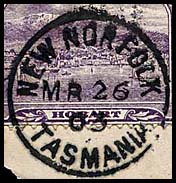 26 March 1903. Type 1: 2 line date, TASMANIA at the base. |
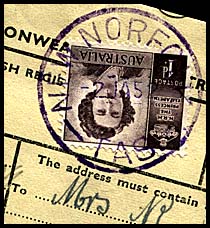 2 January 1945. On telegram piece. Australian period - one line date, TAS at the base. |
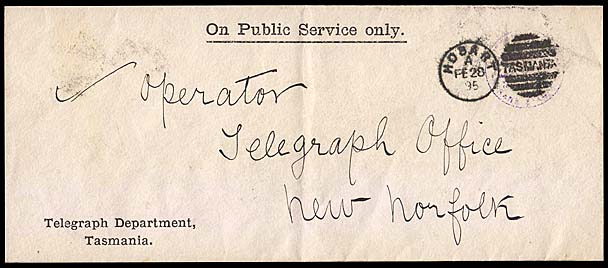 Addressed to the Telegraph Office, New Norfolk. |
Colonial period envelope (TC-EA-1) with TELEGRAPH DEPARTMENT in lower left corner.
|
|
| Ouse.
The Telegraph Office was opened in 1876. In the 1890s, Ouse became an important branch for a southern route to the west coast. |
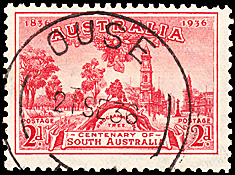 |
|
